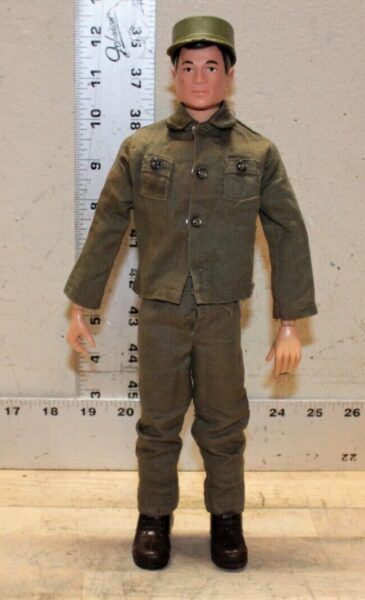#Hot #Christmas #Toys #MustHaves #MidCentury #WorthPoint
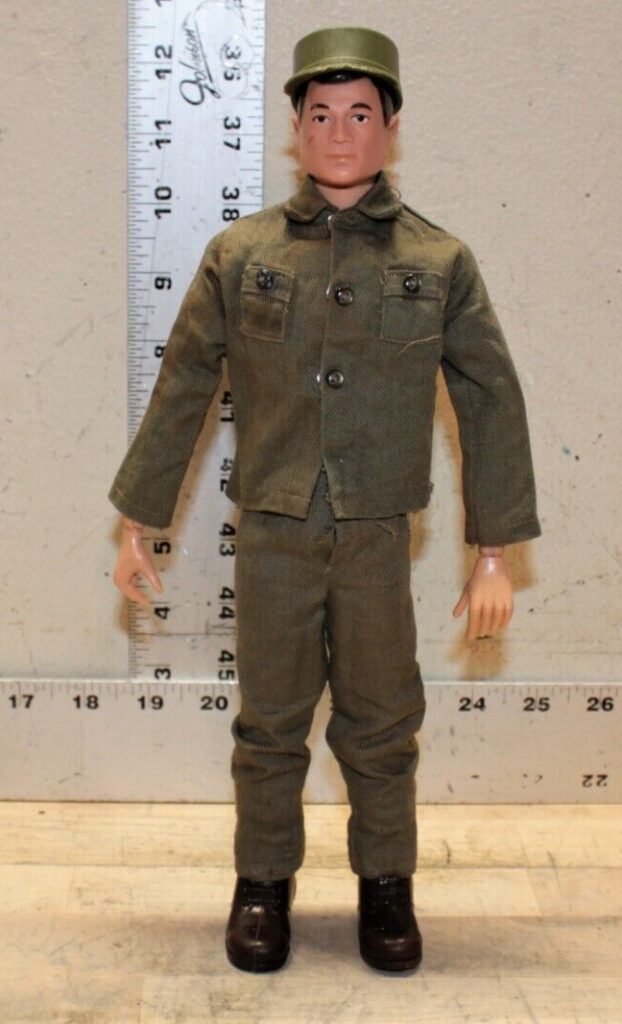
With December winding down, children are excited about what they might find under the tree on Christmas morning. Every year, children want a few “hot” toys, and Santa and his parent helpers have a hard time finding them.
Today, video game systems and other tech toys are the most popular toys. However, during the mid-century period of the 1950s and 1960s, there were very few electronic toys. At that time, gender stereotypes were also common, with dolls being marketed to girls and trucks being marketed to boys. WorthPoint researched some of the popular Christmas toys from this period, and while much has changed, some toys are now hot collectibles decades after first appearing in Santa’s sleigh.
G.I. JOE: THE BARBIE FOR BOYS
While Mattel saw massive success with its fashion doll Barbie, competitor Hasbro wanted to get in on the game and introduced G.I. Joe. Hasbro made it clear he was not a doll; the company’s executives called him an “action soldier.” The doll was the same size as a Barbie and came with different uniforms and equipment—sold separately, of course.
My brother got one for Christmas the year he turned six years old, and from then on, my Barbie was never safe from his marauding ways. His G.I. Joe would rappel down from the roof of the Dream House and try to kidnap her while I screamed. My mother, a Navy veteran, would often lock him up in a china cabinet, which she called the “brig,” to get a break from the battles.
Although G.I. Joe was a huge sales winner for Hasbro, the toy was fading in popularity by the early 1970s, primarily due to public sentiment about the war in Vietnam. Today, collectors treasure early versions of the toy, with its nineteen fully articulated joints.
PATTY PLAY PAL: COMPANION DOLLS
One of the hottest dolls on the market in the early 1960s was the Patti Playpal Doll, made by one of the largest toy companies at the time, Ideal. The walking version of the doll had a mechanism inside that made it walk beside a child when the child raised its arm.
At thirty-five inches tall, Ideal designed the doll to match the size of an average three-year-old child. It was common for parents to buy their child an outfit matching the Patti Playpal doll since it was large enough to wear standard children’s clothing.
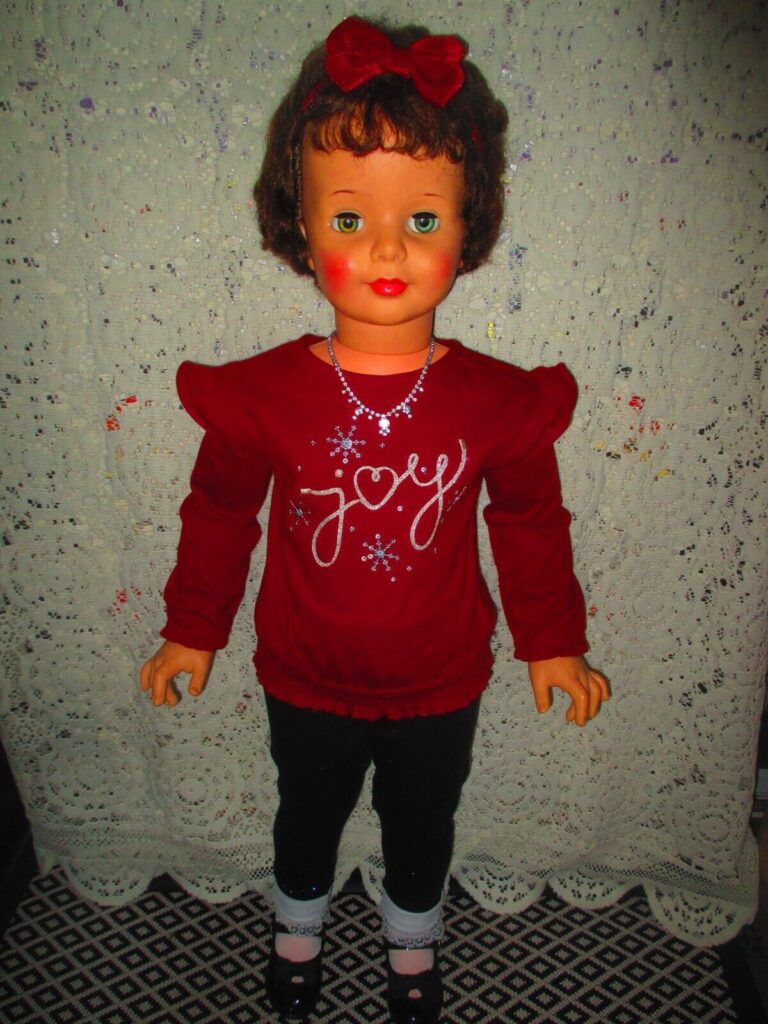
My best friend lived across the street from me when I was growing up, and she got one for her birthday in the fall. Of course, all the girls from my street wanted one the following Christmas. The size and the ability to walk made it wildly popular. My friend named her “Mahmoo,” and they were inseparable. She moved away the following year, and when we said goodbye, all the girls in the neighborhood brought out their Patti dolls to wave as she drove off.
They remain popular with collectors, some of whom dress the dolls in more modern clothing, much like the American Girl dolls.
WHERE THE BOYS ARE
While separating toys by gender stereotypes is fortunately a thing of the past, in the 1950s and 60s, it was very much the norm. For boys, the toys focused heavily on Western themes like cowboys, forts, horses, and wagon trains in the mid-1950s. But by the 1960s, the focus had shifted to space toys. One thing that hasn’t changed is the practice of selling toys based on popular television shows and movies.
Toys from shows like Gunsmoke and Wagon Train were big sellers at Christmas. Marshal Matt Dillon was a hero to many youngsters who watched the show faithfully. Cap guns and cowboy hats from television shows made kids feel like they were rolling along the prairie, headed for adventure.
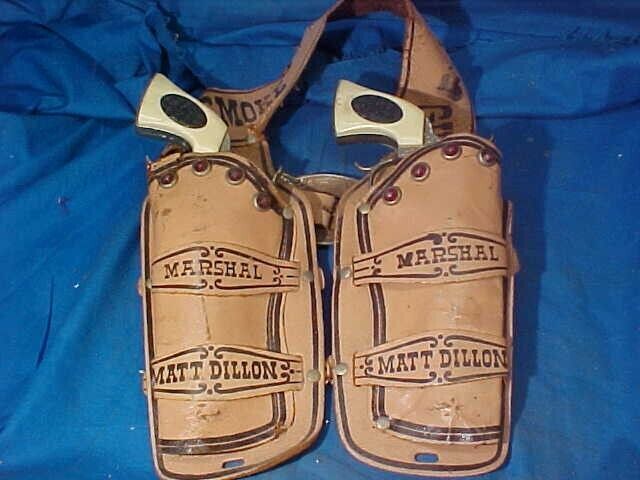
As the space race heated up, toys that featured intergalactic explorers, space creatures, and rockets took over the shelves. Major Matt Mason was Mattel’s answer to G. I. Joe, and while he did not have his own show, the commercials and intense news coverage of NASA and the space program made him famous. Collectors still like the playsets, and Tom Hanks has been shopping for a movie about the character since 2012. With the success of Mattel’s Barbie movie, it looks like it will happen soon. Time will tell if vintage Matt Mason toys will see a resurgence in demand once the movie comes out.
SUGAR AND SPICE
Toys aimed at girls in the mid-century were mainly about caring for children, keeping a home, and looking pretty. Toys are always a product of their time, and one of the more popular toys for girls was the Easy-Bake Oven. Produced by Kenner Toys, the company marketed it primarily to young girls. At the time, many children wanted to do what they saw their parents doing. Television was also a considerable influence, and most roles for women at the time were homemakers, maids, or young wives taking care of their husbands.
In the early 2000s, Kenner became part of the Hasbro Toy Group, and there was a call for the Easy-Bake Ovens to be more gender-neutral. It was a different world, and when thirteen-year-old McKenna Pope of Garfield, New Jersey, amassed over 40,000 signatures on an internet petition, the company listened. They added boys to the advertising and redesigned the ovens to be less pink and purple and more neutral.
DANGER, DANGER
While toy safety standards are higher now than in the 1950s and ’60s, looking back, it’s hard to believe how some toys made it out of the design stage. While kids played outside more back in the day, giving children flying spears to chuck around the lawn hardly seemed like a safe and healthy way to get some fresh air, but that’s precisely what Jarts were.
The company added wording on the box that the game was for adults, but when a California girl died from injuries sustained playing lawn darts in 1987, her father lobbied for their removal. The company stopped producing them, and they are not legal to sell on eBay, but collectors still pay high prices for the boxes and target rings.
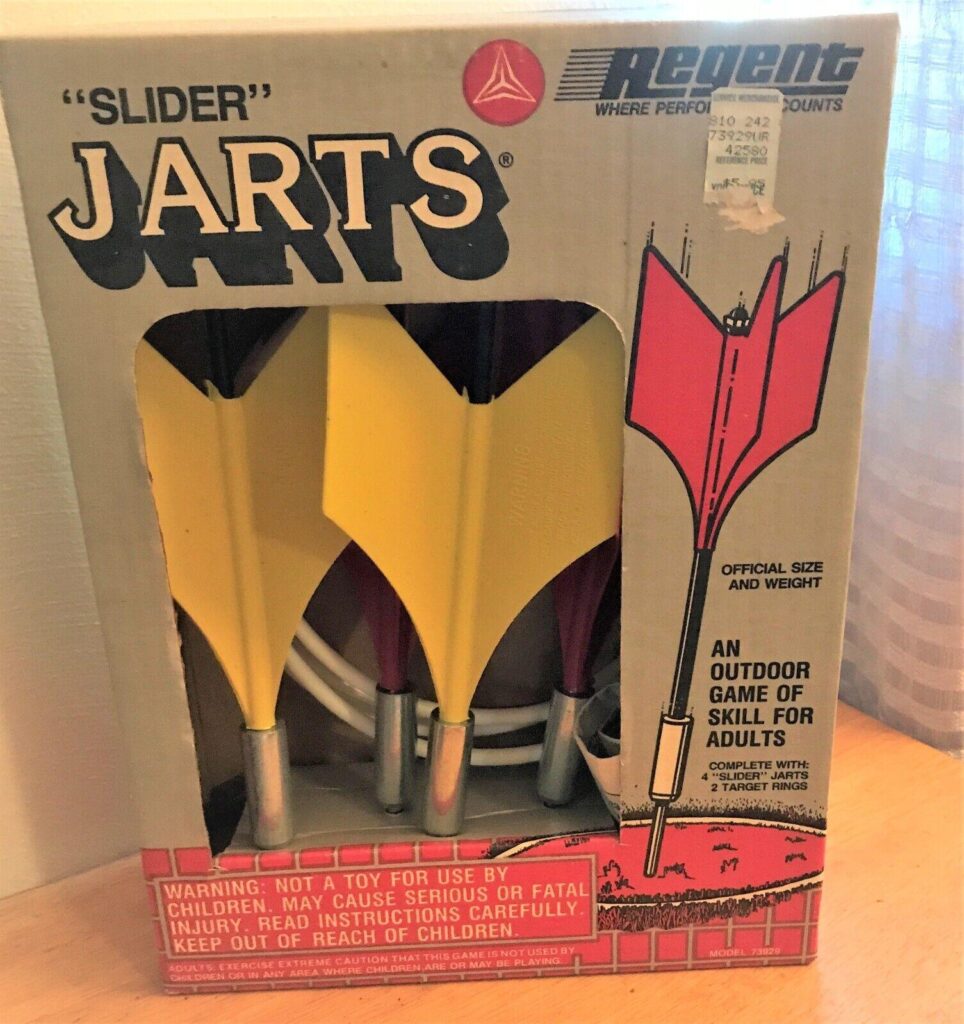
Another dangerous toy came in the form of two resin spheres attached to a string with a loop. Klackers—also called Click-Clacks, Whakkos, and Knockers—were meant to be bounced back and forth on a string. More often than not, young kids in the 1960s were bouncing them off their noses, teeth, and siblings’ heads.
Aside from the injuries caused by the balls hitting someone, there was a concern that shards of acrylic plastic would chip off and put a kid’s eye out. Manufacturers removed them from the market in the 1970s.
Although children and their Christmas toys have changed quite a bit since the mid-century, the magic of when a kid sees the very toy they’ve wished for under the tree has remained—even if it is a PlayStation or a laptop instead of a baby doll or a cap gun.
Brenda Kelley Kim lives in the Boston area. She is the author of Sink or Swim: Tales From the Deep End of Everywhere and writes a weekly syndicated column for The Marblehead Weekly News/Essex Media Group. When not writing or walking her snorty pug, Penny, she enjoys yard sales, flea markets, and badminton.
WorthPoint—Discover. Value. Preserve.

